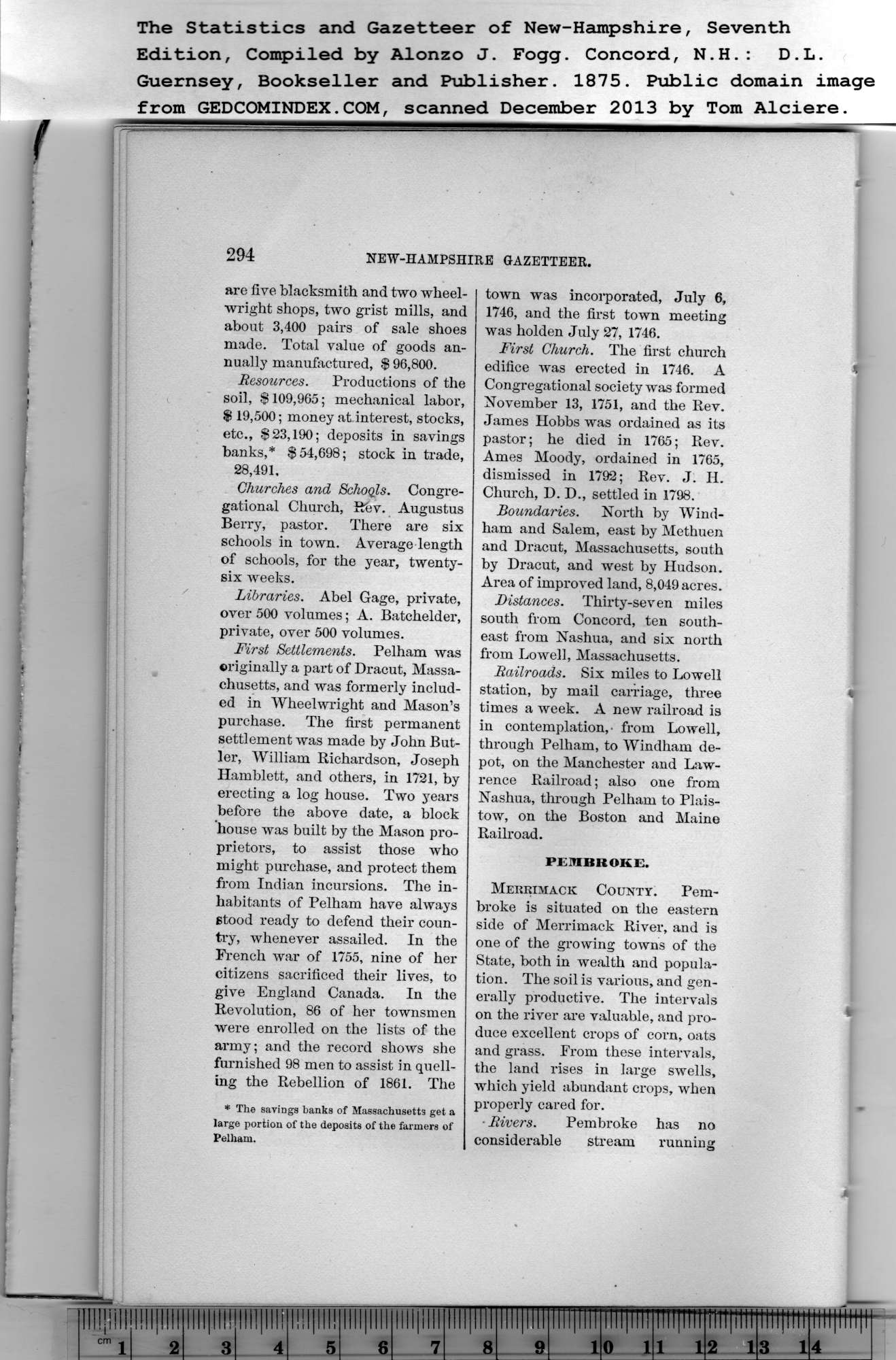|
are five blacksmith and two wheel-
wright shops, two grist mills, and
about 3,400 pairs of sale shoes
made. Total value of goods an-
nually manufactured, $ 96,800.
Resources. Productions of the
soil, $109,965; mechanical labor,
$ 19,500; money at interest, stocks,
etc., $23,190; deposits in savings
banks,* $54,698; stock in trade,
28,491,
Churches and Schools. Congre-
gational Church, Rev. Augustus
Berry, pastor. There are six
schools in town. Average length
of schools, for the year, twenty-
six weeks.
Libraries. Abel Gage, private,
over 500 volumes; A. Batehelder,
private, over 500 volumes.
First Settlements. Pelham was
originally a part of Dracut, Massa-
chusetts, and was formerly includ-
ed in Wheelwright and Mason’s
purchase. The first permanent
settlement was made by John But-
ler, William Richardson, Joseph
Hamblett, and others, in 1721, by
erecting a log house. Two years
before the above date, a block
house was built by the Mason pro-
prietors, to assist those who
might purchase, and protect them
from Indian incursions. The in-
habitants of Pelham have always
Stood ready to defend their coun-
try) whenever assailed. In the
French war of 1755, nine of her
citizens sacrificed their lives, to
give England Canada. In the
Revolution, 86 of her townsmen
were enrolled on the lists of the
army; and the record shows she
furnished 98 men to assist in quell-
ing the Rebellion of 1861. The
* The savings banks of Massachusetts get a
large portion of the deposits of the farmers of
Pelham. |
town was incorporated, July 6,
1746, and the first town meeting
was holden July 27, 1746.
First Church. The first church
edifice was erected in 1746. A
Congregational society was formed
November 13, 1751, and the Rev.
James Hobbs was ordained as its
pastor; he died in 1765; Rev.
Ames Moody, ordained in 1765,
dismissed in 1792; Rev. J. II.
Church, D. D., settled in 1798.
Boundaries. North by Wind-
ham and Salem, east by Methuen
and Dracut, Massachusetts, south
by Dracut, and west by Hudson.
Area of improved land, 8,049 acres.
Distances. Thirty-seven miles
south from Concord, ten south-
east from Nashua, and six north
from Lowell, Massachusetts.
Railroads. Six miles to Lowell
station, by mail carriage, three
times a week. A new railroad is
in contemplation,' from Lowell,
through Pelham, to Windham de-
pot, on the Manchester and Law-
rence Railroad; also one from
Nashua, through Pelham to Plais-
tow, on the Boston and Maine
Railroad.
PEMBROKE.
Merrimack County. Pem-
broke is situated on the eastern
side of Merrimack River, and is
one of the growing towns of the
State, both in wealth and popula-
tion. The soil is various, and gen-
erally productive. The intervals
on the river are valuable, and pro-
duce excellent crops of corn, oats
and grass. From these intervals,
the land rises in large swells,
which yield abundant crops, when
properly cared for.
• Rivers. Pembroke has no
considerable stream running |
